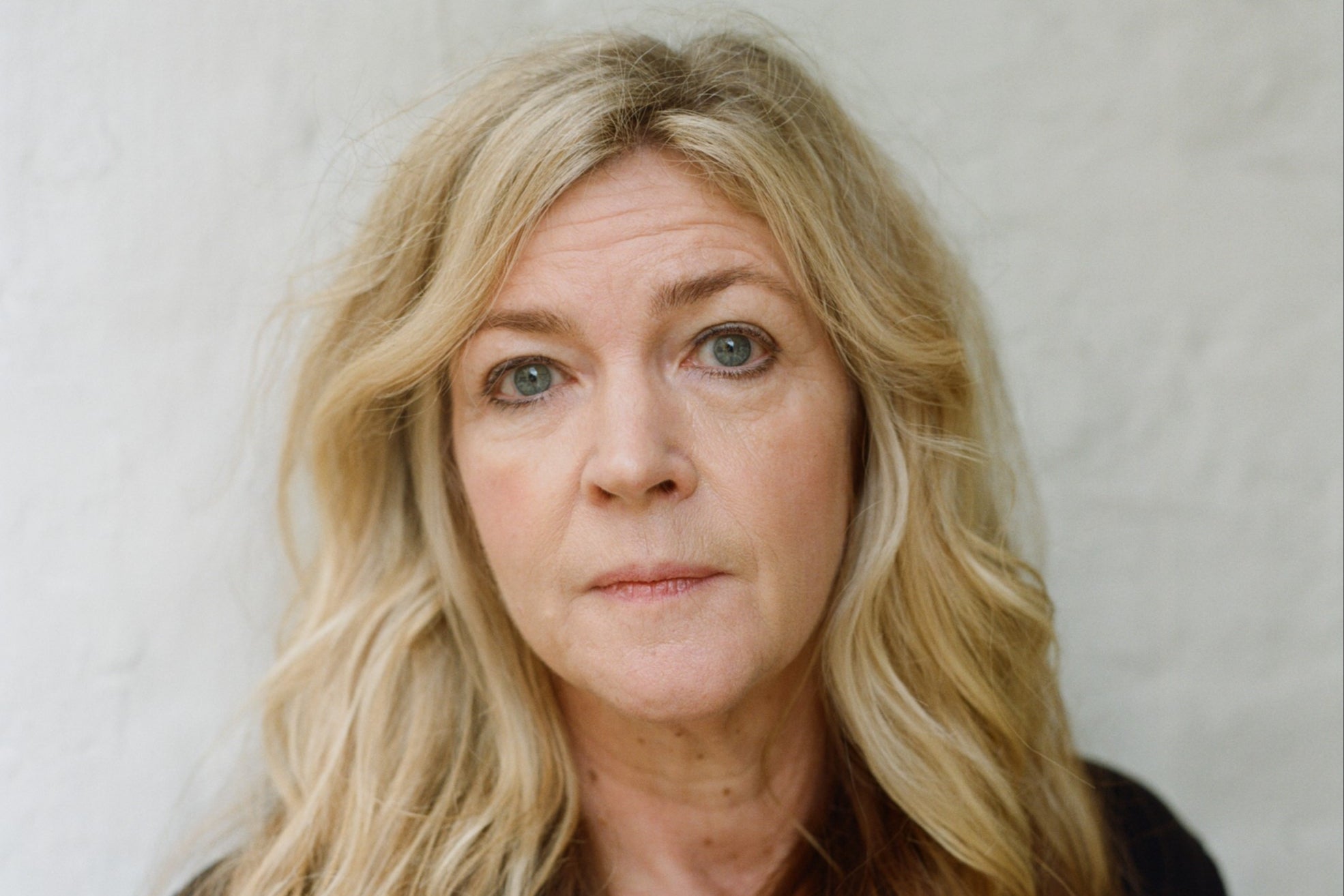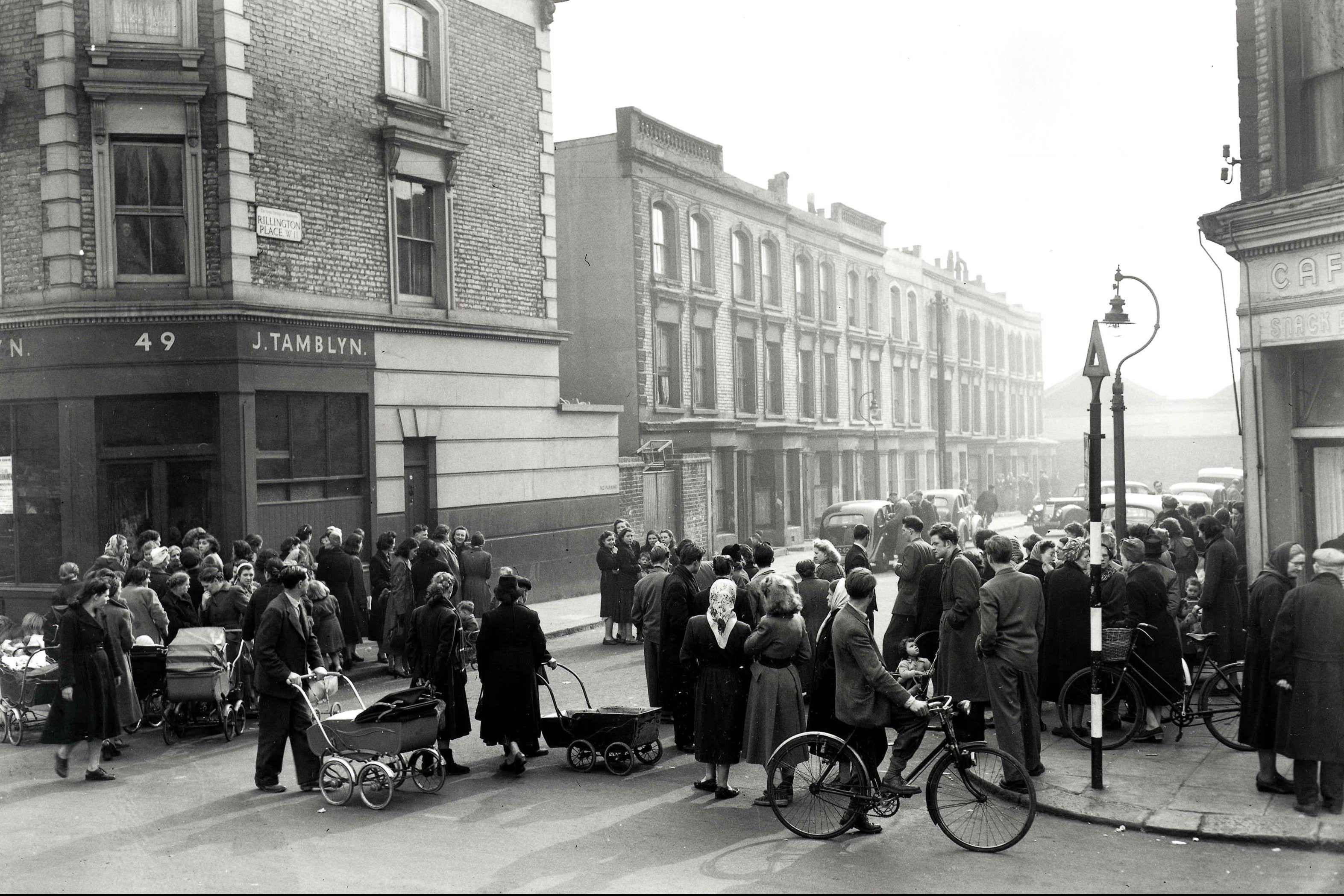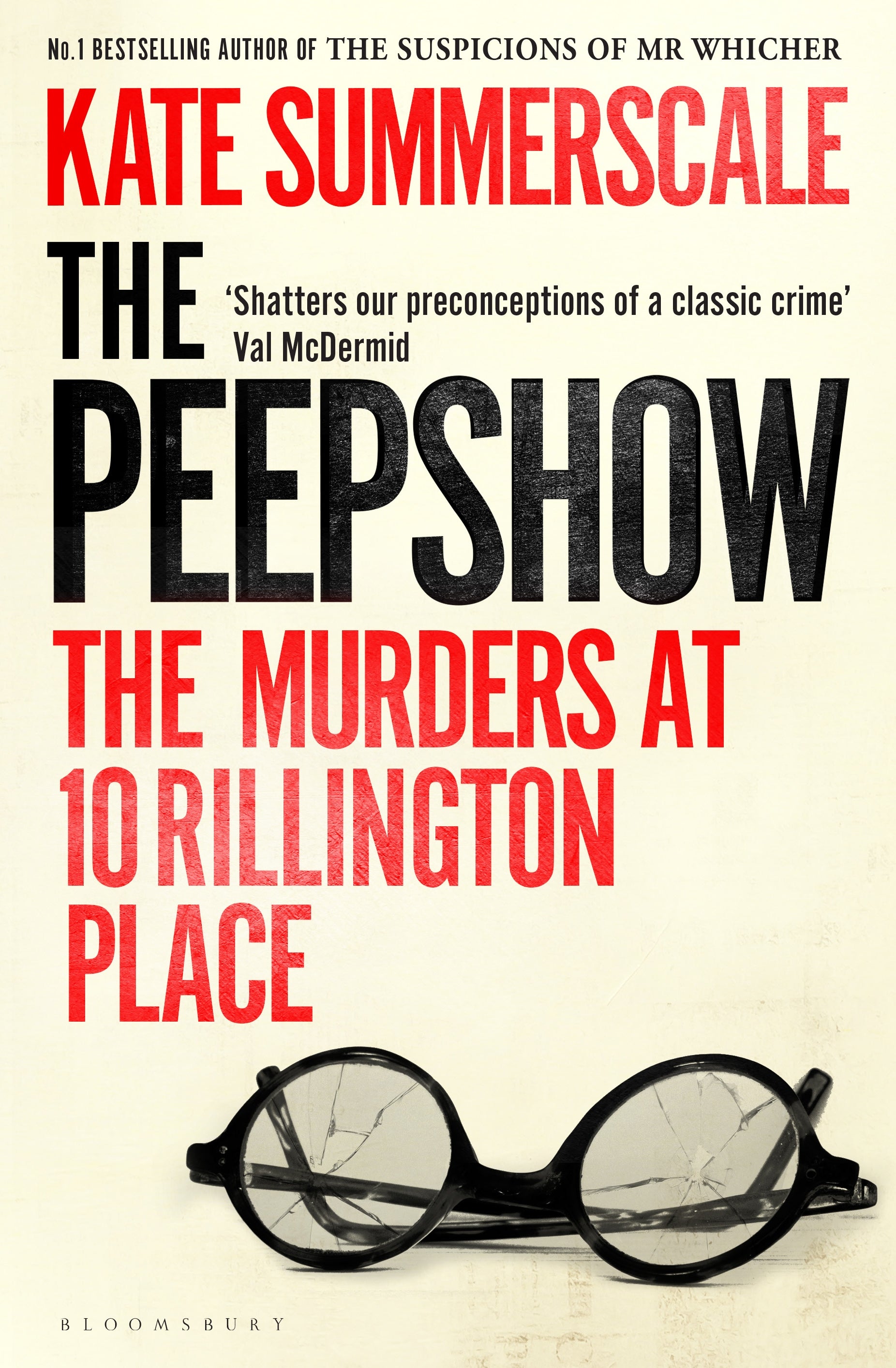Kate Summerscale on the 10 Rillington Place murders: ‘Why do some men go out of their way to kill women?’
True crime queen Kate Summerscale explores one of Britain’s most notorious murder trials in her latest book ‘The Peepshow’. She tells Katie Rosseinsky about the shocking contemporary parallels – and about a discovery that will change how we think about the case


Your support helps us to tell the story
From reproductive rights to climate change to Big Tech, The Independent is on the ground when the story is developing. Whether it's investigating the financials of Elon Musk's pro-Trump PAC or producing our latest documentary, 'The A Word', which shines a light on the American women fighting for reproductive rights, we know how important it is to parse out the facts from the messaging.
At such a critical moment in US history, we need reporters on the ground. Your donation allows us to keep sending journalists to speak to both sides of the story.
The Independent is trusted by Americans across the entire political spectrum. And unlike many other quality news outlets, we choose not to lock Americans out of our reporting and analysis with paywalls. We believe quality journalism should be available to everyone, paid for by those who can afford it.
Your support makes all the difference.When bestselling true crime writer Kate Summerscale found herself looking back on the notorious murders at 10 Rillington Place, she was struck by a question: “Why do some men go out of their way to kill women?” These horrific killings have already been the subject of countless books, as well as a classic film and a BBC TV series. However, when Summerscale began her research in 2021, a spate of recent crimes against women – Bibaa Henry and Nicole Smallman, who a stranger in Fryent Country Park killed, and Sarah Everard, who was abducted and killed by serving Met Police officer Wayne Couzens – meant that the case felt horribly resonant. Working on her book The Peepshow, she would unpick these uncomfortable parallels and inadvertently end up finding an answer to one of the case’s outstanding questions.
Almost 70 years earlier in March 1953, a tenant from the upstairs flat at this now notorious London address made a horrifying discovery. While cleaning the ground floor kitchen, he had torn a hole in the wallpaper; through it, he could see what appeared to be a woman’s naked back. When the police arrived at the unassuming end-terrace house in Notting Hill, they discovered the bodies of three young women, hidden in an alcove. Their names were Rita Nelson, Kathleen Maloney and Hectorina MacLennan.
But the house, it turned out, held yet more shocking secrets. Under the floorboards was the body of Ethel Christie, who had lived in the flat for 15 years with her husband John Christie, known as Reg, a clerk and former police officer who had disappeared a few days earlier. Later, two more bodies were found buried in the garden: they were Ruth Fuerst and Muriel Eady, who Christie had killed during the Second World War. In another eerie twist, Rillington Place had already been the site of a murder four years earlier, when upstairs tenant Beryl Evans and her baby daughter Geraldine were killed in 1949. Her husband Timothy had been found guilty of Geraldine’s murder and sentenced to death; he had initially confessed to the killings, but then changed his story, blaming Christie. Had the wrong man been hanged?
Back in the Seventies, Rillington Place was demolished as part of the redevelopment of Notting Hill (before that, it was christened Runton Close in a bid to whitewash its disturbing history). However, the address remains a symbol of the horror that can lurk behind a respectable facade. This is a through-line in the stories that fascinate Summerscale, from the wealthy Victorian family torn apart by a murder investigation in her 2008 hit The Suspicions of Mr Whicher to suburban poltergeists in The Haunting of Alma Fielding.
Christie’s crimes are “by far the most famous and written about” subject that the author has ever tackled, she tells me, “so it was daunting, but it was also exciting to take on something that had such a major cultural impact then and even now”. Christie, she notes, was “the most notorious serial killer of women of his time” – looking back at the Rillington Place case, she thought, would be “a way of indirectly exploring our own time as well as thinking about why he’d done it”, uncovering “his own psychology, but also the society in which he was shaped”. Before she started her research, she didn’t realise that Christie had been a policeman when he committed his first murder in 1943, and that “his uniform gave him a plausibility and an authority that enabled him to get women into his clutches”. The parallel with Couzens was “chilling”.
In March 1953, Christie immediately became the prime suspect in the killings. After the police described him to the press, warning that “no woman is safe from outrage and death while he is at large”, they were inundated with phantom sightings. On-edge Londoners seemed to be constantly spotting Christie lookalikes – small bespectacled men wearing raincoats – on the Tube, in cafés or cinemas. About a week after the bodies had been discovered, the real Christie was apprehended by police near Putney Bridge; when he was arrested, he was carrying a newspaper clipping about Timothy Evans’ sentencing from years earlier. He eventually confessed to all of the Rillington Place killings, except the murder of baby Geraldine, and pleaded insanity. The trial would hinge upon whether he would be incarcerated in a psychiatric hospital, or sentenced to death if the jury rejected his plea.

In The Peepshow, Summerscale describes Christie as “a grotesque cartoon of the old-fashioned Englishman”, with a veneer of stereotypical respectability. He had experienced impotence from a young age and could only have sex with sex workers; this perceived humiliation seemed to fuel his hatred of women. He was, Summerscale says, “an extremely sanctimonious man who was [outwardly] disgusted by prostitutes and pubs and cursing, yet he was absolutely savage in what he did to women”. He would invite victims back to his flat, then knock them out with cooking gas, before raping and strangling them.
There was a creepy parallel between the voyeurism that Christie himself had carried out and the way that papers ran pictures of the victims
The contradictions between his outer facade and depraved secret life were a warped echo of the uneasy dichotomies of the post-war era, Summerscale adds. The period after the Second World War, she says, “was a time of great sexual freedom, before the Sixties, because the war had really loosened things up – separating families, men paying for sex when they were overseas, women maybe having dalliances at home”. But at the same time, “there were also lots of editorials condemning the loose morals of British society”. Christie’s crimes were rooted in the incongruity “between a society that had become much more loose and one that still had this almost Victorian attitude of condemning sex outside marriage”.
This period coincided with “Fleet Street in its heyday”, Summerscale says: “absolutely ruthless [and] kind of a Wild West”. Newspapers regularly sold millions of copies a day – and pursued increasingly lurid stories to keep their readers interested. No surprise, then, that the tabloid press chased after every twist and turn in the Rillington Place saga. “There was a creepy parallel between the voyeurism that Christie himself had carried out and the way that papers ran pictures of the victims alongside slightly prurient descriptions of their bodies, their looks, what they were wearing when they died,” she adds.
Today’s true crime coverage can still fall into similar traps, objectifying female victims while purporting to centre their stories. Much like Hallie Rubenhold’s Baillie Gifford 2019 prize-winning book The Five, which told the stories of the women murdered by Jack the Ripper, The Peepshow helps redress this salacious coverage. Summerscale sifted through witness statements in police files from the women’s friends and family to “reconstruct how [the women] lived and who they were” before their deaths – it was “a painstaking job” but also “a very rewarding task”.

Her book also focuses on two very different writers who covered the case. The first is Harry Procter, star reporter for the Sunday Pictorial, who had been one of the first to arrive on the scene at Rillington Place after the bodies were discovered. Procter had previously interviewed Christie, shortly after the murder of Beryl and Geraldine Evans in 1949. The possibility that the journalist might have been duped by him – and that Timothy Evans might have been wrongly condemned to death as a result – haunted him. “Following the case through [Procter’s] eyes helped me zoom in a bit and tell the story as it unfolded, rather than retrospectively,” Summerscale says. The Sunday Pictorial ended up paying for Christie’s legal team, in an ethically dubious quid pro quo that gave Procter exclusive access to confessional notes written by Christie in prison. After the verdict, these were published, albeit in “heavily adapted” form, in the Pictorial.
The second writer is novelist Fryn Tennyson Jesse. Her essay about Christie appeared in the series of crime books Notable British Trials, “the most prestigious true crime forum of the time”; it caught Summerscale’s attention with its “acerbic tone”. She was also “probably the only woman working in the true crime field at the time”, having previously written books based on real-life cases; most famous was her 1939 novel, A Pin to See the Peepshow. In contrast to better-known mystery writers such as Agatha Christie or Dorothy L Sayers, she was “less interested in the ingenious plot” of a whodunnit “and more [interested] in the dark psychology” of a criminal, Summerscale says, citing her as a precursor to The Talented Mr Ripley author Patricia Highsmith.
Jesse was addicted to morphine and, at the age of 60, was losing her sight, but she still managed to attend court every day, having called upon her high society connections to secure her place. She sat near the likes of photographer Cecil Beaton and playwright Terence Rattigan – London’s cultural luminaries were just as hooked on the case as the average newspaper reader.
Somehow these stories do relieve our anxiety, but they also arouse anxiety. It’s a strange kind of dance
Indeed, our current obsession with grisly true crime podcasts and Netflix documentaries is by no means a new phenomenon. You can trace our fixation back to cases like this one, where murder became a source of grim entertainment as much as horror. It was “predominantly women” like Jesse who were gripped by the Christie case, Summerscale says. Shortly after the discovery of the bodies, a group of “six middle-aged, well-heeled women” had pulled into Rillington Place in a Daimler to see the “murder house”; a separate group of younger women tried to “break in” to number 10. Some would queue up in the early hours for a seat in the public gallery during the trial.
This interest, Summerscale says, might seem “counterintuitive – why would women want to read about women being brutally murdered?” But she can think of a few reasons. “One is just wanting to know what you’re up against – women might obviously be curious about the men who set out to attack them, as a way of defending yourself or protecting yourself. But I think there’s also darker impulses. Somehow these stories do relieve our anxiety, but they also arouse anxiety. It’s a strange kind of dance.”
Eventually, the jury rejected Christie’s plea of insanity, after less than an hour and a half of deliberation. He was hanged a few weeks later. But the controversy only continued: surely it was too much of a coincidence that two murderers had lived in the same building, and strangled their victims? Had Timothy Evans been innocent all along? An inquiry was commissioned, but its leader, John Scott Henderson QC, eventually concluded that Christie had lied about murdering Beryl Evans, in order to fit in with his narrative of insanity, and that Evans was guilty. A second inquiry in 1966 concluded that Evans had killed his wife but not his daughter, and he was granted a posthumous pardon. In 2004, the Criminal Cases Review Commission said that “the conviction and execution of Timothy Evans for the murder of his child was wrongful and a miscarriage of justice”, and also declared “there is no evidence to implicate [Evans] in the murder of his wife”.

But when she was deep in research at the National Archives, Summerscale uncovered a memo that suggested a different conclusion. It was a record of a conversation between Christie and a prison guard, shortly after he’d been condemned to death. “This is a statement that is of no benefit to him, unlike any of the other statements,” Summerscale says. In it, Christie says that Evans had asked him to “do in” his wife, with whom he’d had a fraught, sometimes violent relationship. Christie had then killed her and murdered her daughter, in case the sound of the baby’s cries provoked alarm.
“As I thought about it and read again through all the different, contradictory confessions that had been made, I thought ‘this is the first account of the murders of Beryl and Geraldine Evans that actually might make sense, that can accommodate the different stories and explain them,’” Summerscale says. The memo had been sealed up for decades afterwards. “So that alerted me to the fact that the government had taken it seriously, not necessarily as a solution to the crime, but as something that would cause an enormous stir.”
When Summerscale started writing The Peepshow, she says, she “went into this case thinking ‘who is a serial killer of women? Where does he come from?” She certainly “didn’t go into it thinking ‘I’m going to solve the Evans murders’”. This latest potential solution, with its muddle of culpability, perhaps only complicates and compounds the murky horror of this case that has fascinated people for decades.
‘The Peepshow: The Murders at 10 Rillington Place’ by Kate Summerscale is out now, published by Bloomsbury
Join our commenting forum
Join thought-provoking conversations, follow other Independent readers and see their replies
Comments